Pyramids, temples, mummies and pharaohs: must-see attractions in Egypt

Photo source: 123rf.com
Follow in the footsteps of the pharaohs, solve the riddle of the Sphinx and discover a mystical country on the banks of the Nile. Attractions that you must visit if you travel to Egypt.
Egypt is a country full of stunning structures of unreal scale, mythology and the feeling that you are standing between significant parts of human history. We'll tell you about the 15 most important attractions in Egypt that are definitely worth visiting during a trip to this wonderful country.
Pyramids of Giza. Photo source: 123rf.com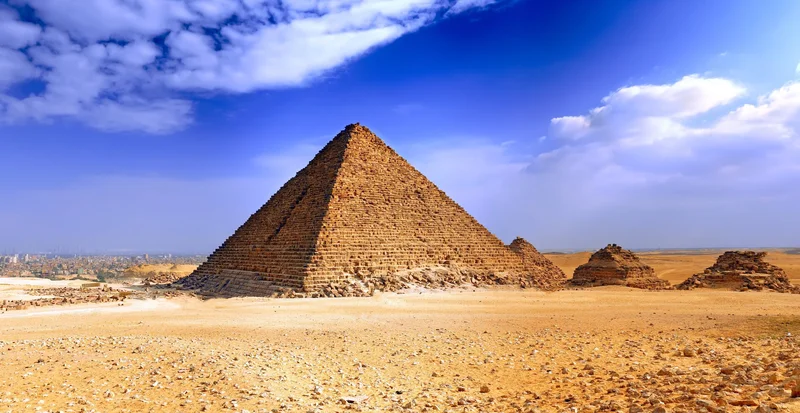
1. Pyramids of Giza.
Just 15 kilometers from Cairo are the Pyramids of Giza, which are one of the most important landmarks in Egypt. The last remaining ancient wonder of the world was built approximately between 2620 and 2500 BC, and approximately 10 thousand workers were involved in its construction. The pyramids are located on an area that was previously used as a pharaonic cemetery. There are no records of the construction of the pyramids, so scientists and archaeologists are still puzzled by how stone blocks weighing up to 2.5 tons could be stacked on top of each other - and in a relatively short time. Moreover, the architecture is characterized by a precision that can only be achieved with the most modern technology and therefore can hardly be explained. The myth of the pyramids also includes that they are virtually empty: neither the grave goods nor mummies typical of structures of this type have been discovered.
The Pyramid of Cheops is the largest, tallest and most important pyramid in the world. The sarcophagus was indeed found, but it was empty.
Pyramid of Khafre: Khafre was the son of Cheops, his pyramid appears larger to the untrained eye than his father's pyramid. This is a misconception because Khafre's pyramid simply stands a little higher.
Pyramid of Mykerinos: Mykerinos, in turn, was the son of Khafre, his smallest of the three pyramids. The statues found in the pyramid of Mykerinos can today be seen on display in the Egyptian Museum in Cairo.
What is truly impressive and hardly explicable is that the pyramids are located exactly in the four cardinal directions and at right angles
Sphinx. Photo source: 123rf.com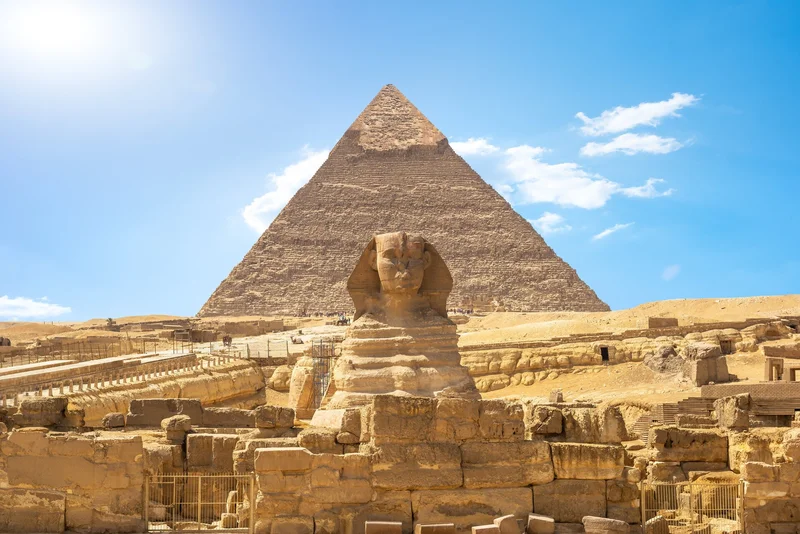
2. Sphinx.
The Sphinx of Giza is a legendary sculpture located near the Pyramids of Giza, so this attraction can be reached in a similar way. According to Greek legend, the Sphinx laid siege to the city of Thebes and asked travelers his famous riddle about what creature walks on four legs in the morning, two legs at noon and three legs in the evening. If the answer was wrong, the sphinx was said to strangle and devour people. Hence the name “Sphinx”, which means strangler. Only Oedipus was able to correctly answer the riddle and free Thebes from the Sphinx.
Besides its impressive size - 73.5 meters long and 20 meters high - the lioness with a human head, which is about 4,500 years old, is mesmerizing. However, it is still almost completely preserved as it was covered with sand most of the time. At this time, further excavations cannot continue as Egyptian authorities fear possible damage to the monument.
Luxor. Photo source: 123rf.com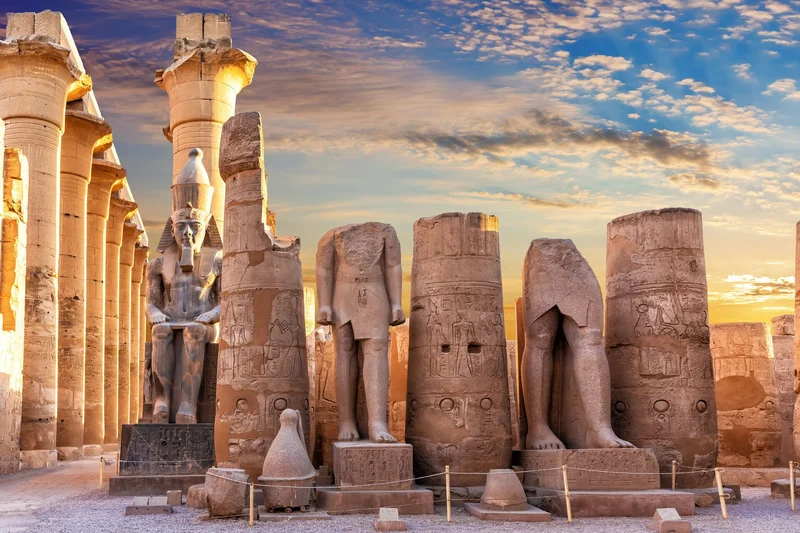
3. Luxor.
Luxor is a city in southern Egypt, which is now located on the site of ancient Thebes. Luxor literally means "City of Palaces". Today, Luxor still has a lot to offer tourists because it is very close, among other things, to the Valley of the Kings, as well as the Karnak temple complex and the mortuary temple of Hatshepsut, the Egyptian queen who ruled Egypt in the 16th century BC. The city also preserves the Luxor Temple, which is relatively “new” compared to Karnak, it was built before 1070 BC. and is dedicated to the god Amun and his family. In the evening hours, the light of the sun falls especially beautifully on the columns and impressive statues, thus creating a mystical image.
Interesting fact: The Obelisk of Luxor, formerly standing in the temple's forecourt, was donated to France in 1836 and now stands in the Louvre.
Valley of the Kings. Photo source: 123rf.com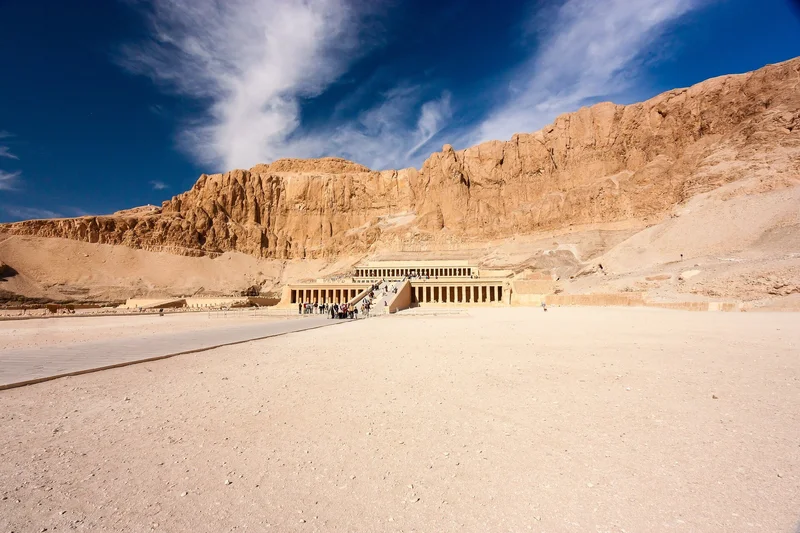
4. Valley of the Kings.
The Valley of the Kings, located near Luxor, is the burial site of kings from the 18th to 20th dynasties of Egypt.
The valley opposite Karnak was the final resting place of apparently more than 60 kings. Tutankhamun's burial chamber, which was completely closed when it was found, became particularly famous. This is unusual, as many tombs were opened and looted in ancient Egypt. The Valley of the Kings, surrounded by cliffs, is adjacent to additional tombs such as the Valley of the Queens and the tombs of the nobility. After the discovery of Tutankhamun's burial chamber, the legend of the pharaoh's curse quickly spread, according to which the archaeologists were to suffer a terrible death. As a result, some of the people involved in the excavations actually died, but many committed suicide out of fear of being cursed.
Temple complex Karnak. Photo source: 123rf.com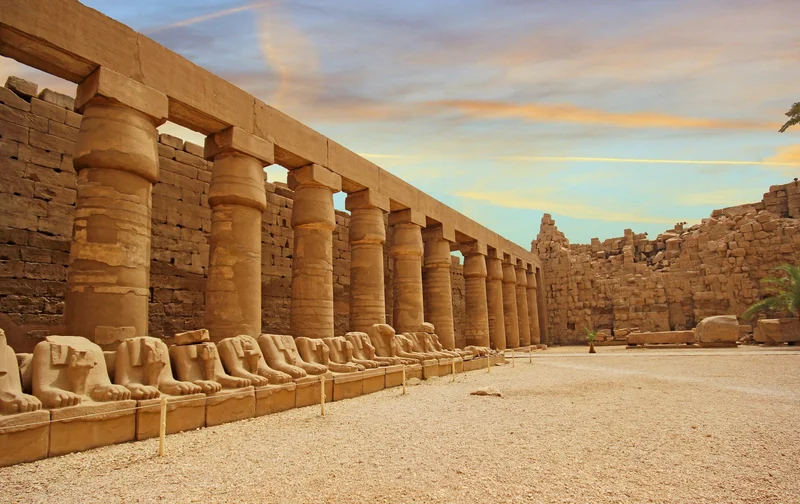
5. Karnak Temple Complex.
Karnak Temple, Egypt's largest temple complex, is also located near Luxor, opposite the Valley of the Kings. Karnak, like some areas of Luxor, is listed as a UNESCO World Heritage Site.
Among the largest ancient temple structures in the world are the temples of Ramesses III, Khon and Amun-Re, among others. The giant stone hall and exquisitely decorated columns make Karnak truly special. The object was used for sacrifices and prayers, thereby appeasing the gods.
Library of Alexandria. Photo source: 123rf.com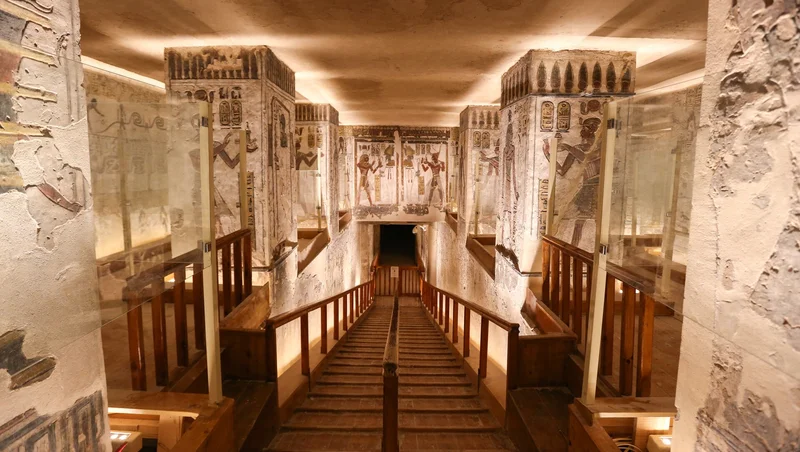
6. Library of Alexandria.
The legendary Library of Alexandria dates back to the 3rd century BC. The foundation, believed to contain more than 500,000 writing instruments, was probably provided at the opening, but others have been added over the years.
In 2002, the new Library of Alexandria was opened, located near the original site and containing approximately eight million books. About half of the building is occupied by a huge reading room.
7. Egyptian Museum in Cairo.
The largest museum of ancient Egyptian art and one of the most significant attractions in Egypt. In 1835 it was founded by the government to prevent further looting of archaeological treasures. Currently, the museum houses more than 150,000 exhibits, including mummies of famous pharaohs. The peculiarity of the Egyptian Museum is that, unlike, say, European museums, it actually presents exclusively Egyptian exhibits.
Ras Mohammed National Park Photo source: 123rf.com
8. Ras Mohammed National Park.
Ras Mohammed National Park near Sharm el-Sheikh got its name from the tallest rock that resembles a human head, so fishermen nicknamed Ras Mohammed the Head of Muhammad.
This park offers everything from mountain biking to swimming or snorkeling. At the same time, the underwater world can far surpass nature on land. Here you can admire exotic fish and marine life among the colorful coral reefs. So divers will definitely enjoy Ras Mohammed National Park.
Red sea. Photo source: 123rf.com
9. Red Sea.
It is impossible to visit Egypt and not see the Red Sea. To this day, there are many assumptions about how the name of the not-so-Red Sea came about.
Let's start with the fact that the name "Eritrea" is borrowed from Greek and means "red sea". This is also facilitated by lighting conditions that make the land surrounding the sea appear red. In addition, there are many special types of algae, which also give the sea a reddish hue. However, regardless of the reasons, since ancient times it was called the Red Sea. Diving and snorkeling should only be undertaken under the supervision of a guide as currents can be very strong and sudden. The Red Sea is also a highlight for surfers.
10. Oasis Siwa.
In the Libyan Desert in the north-west of the country there is the oasis of Siwa. There you can admire olive trees and date palms standing in the middle of the desert. It was not without reason that Alexander the Great fell in love with this unusual place, because the ruins of the Temple of Amon are still preserved here. Additionally, you can discover the remains of the ancient clay city of Siwa. Even today, Siwa is still home to various Bedouin peoples, whose market, mosque and local history museum should also be on your list of places to visit.
Muhammad Ali Mosque. Photo source: 123rf.com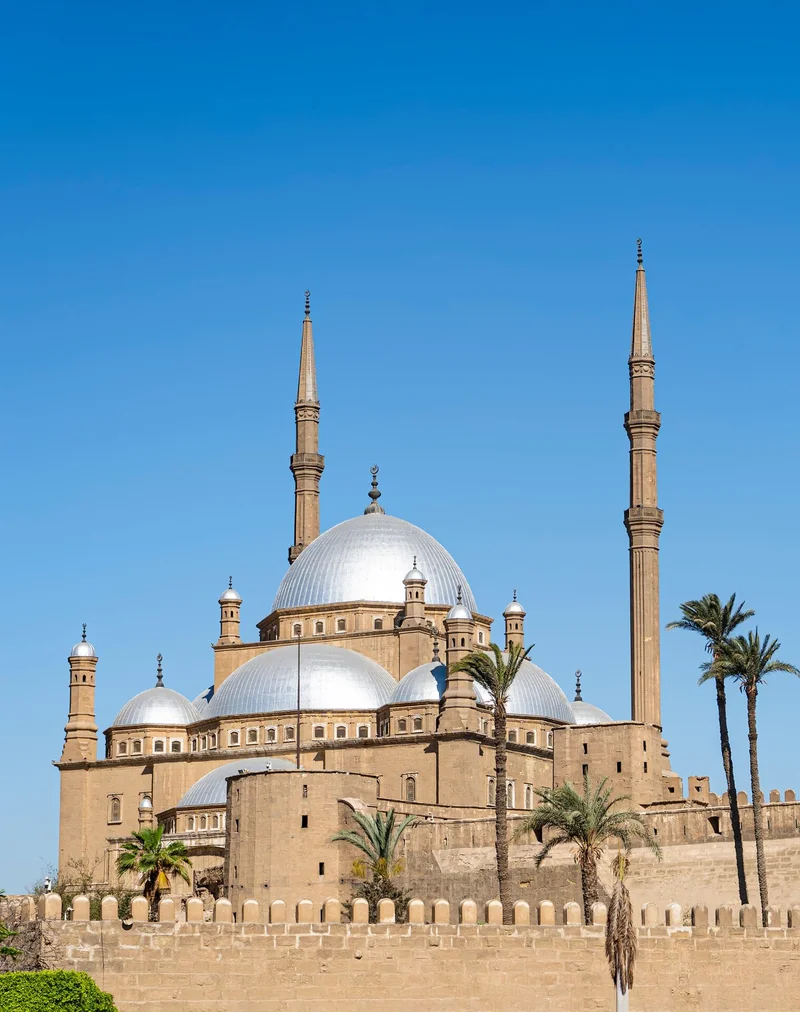
11. Muhammad Ali Mosque.
The Mohammed Ali Mosque, also called the Alabaster Mosque, is a large, magnificent mosque in Cairo built on a Turkish model and opened in 1884.
Inside the mosque, the walls are lined with alabaster and the floors are covered with red carpets. Also especially beautiful are the round lamps, which now replace the former oil lamps. To the right of the entrance is the grave of Muhammad Ali, who died in 1849, long before the construction of the mosque. In the courtyard of the mosque there is a gift from France - a large clock tower brought from Paris in exchange for the Luxor obelisk. However, the clock never worked.
People of other faiths can also visit the mosque outside of prayer times, but they must follow certain rules: take off their shoes on the shelf at the entrance, women need to cover their shoulders. It is not necessary to cover your hair. In front of the building you can get information in different languages, and it might even be worth booking a tour (it's not that expensive).
Tip: From the Mohammed Ali Mosque, if the smog is not too strong, you have a beautiful view of the whole of Cairo!
Monastery of St. Catherine in Sinai Photo source: 123rf.com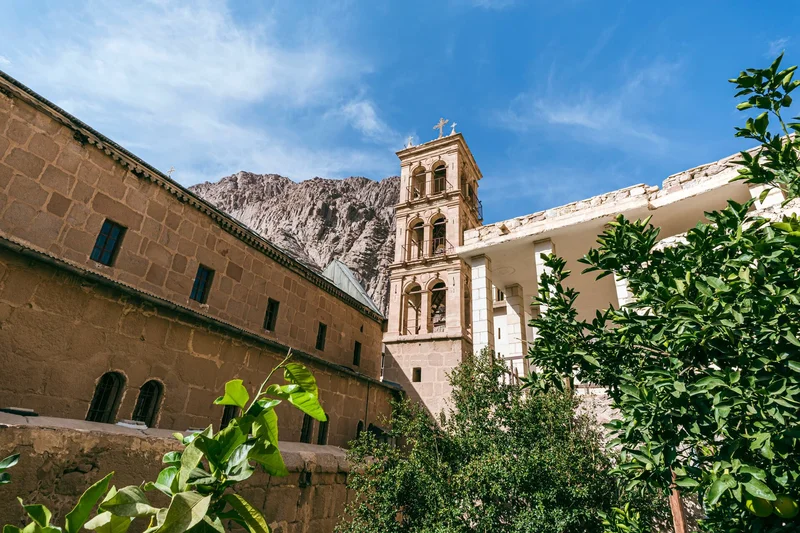
12. Monastery of St. Catherine in Sinai.
St. Catherine's Monastery, located at the foot of Mount Sinai, is the oldest living Greek Orthodox monastery in the world.
Built in its current form in 560, it is, according to legend, the burial place of the remains of St. Catherine. Mount Sinai is famous for the transmission of the Ten Commandments to Moses and his meeting with God in the burning thorn bush. It is said that an offshoot of this legendary bush can still be found near the monastery. In 2002, St. Catherine's Monastery was included in the UNESCO World Heritage List.
The climb up to the monastery is a bit difficult, so you can book a guided overnight hike and be rewarded with cooler temperatures and stunning sunrises.
Temple of Edfu. Photo source: 123rf.com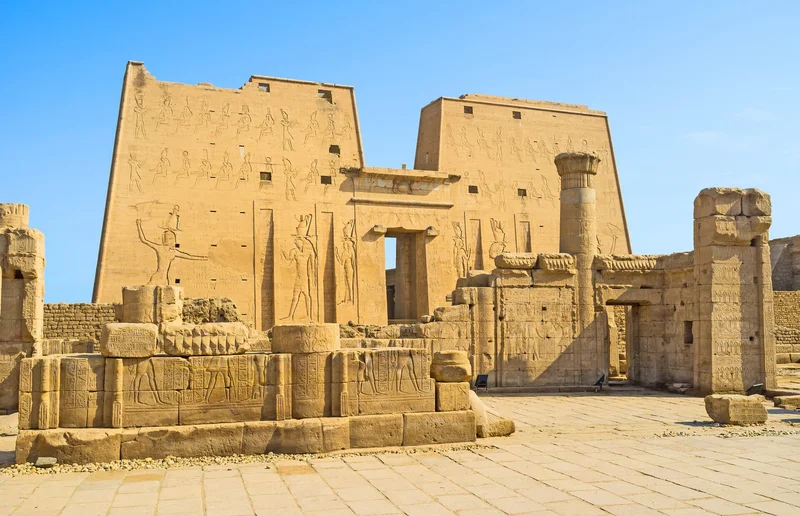
13. Temple of Edfu.
Temple of Edfu to the god Horus, who roughly corresponds to the Greek god of light Apollo. It is said that Horus, the hawk-headed god, fought his important battle against Set at this site, so the temple complex was a famous sanctuary even in ancient times. Besides the temple, there is also a large part of the ancient city of Edfu preserved here, which you should also definitely visit. Admire the huge columns, stroll through the impressive halls, look at the intricately engraved reliefs and be transported back to times long gone! This Egyptian temple, located on the west bank of the Nile, is amazingly well preserved, making it hard to believe that it was built some 2,300 years ago.
Abu Simbel Temple. Photo source: 123rf.com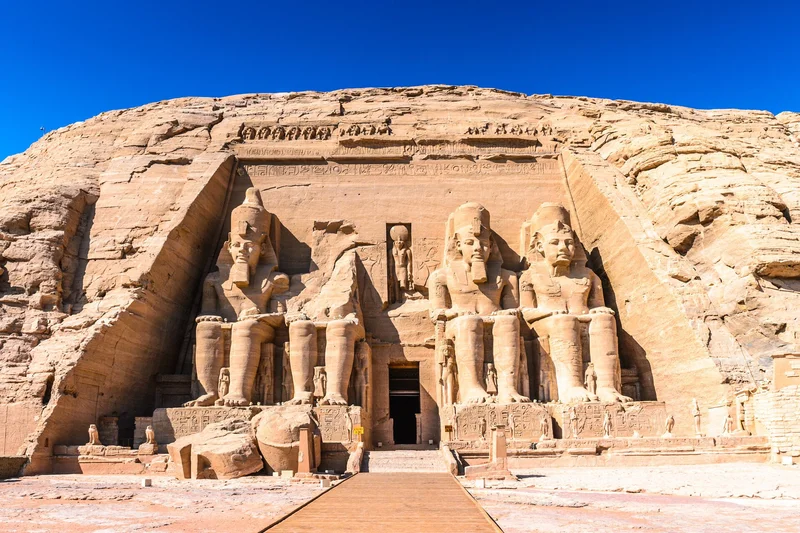
14. Abu Simbel Temple.
In the 13th century BC, the Abu Simbel Temple, one of Egypt's most famous landmarks, was built on the site of the same name. It served to worship Pharaoh Ramses II and his wife Nefertari. The seated statues of the pharaohs are as much as 20 meters high and face east, as that is where the sun rises. This rock temple is also listed as a UNESCO World Heritage Site. Of particular note is the implementation of Abu Simbel in the 60s to save it from being flooded by the Aswan High Dam. At the same time, the entire temple complex was carefully dismantled piece by piece and rebuilt. By the way, a solar miracle occurs on February 21 and October 21 every year. It is then that the sun is at such a convenient angle that it illuminates the statues of the gods inside.
Aswan Dam. Egypt. Photo source: 123rf.com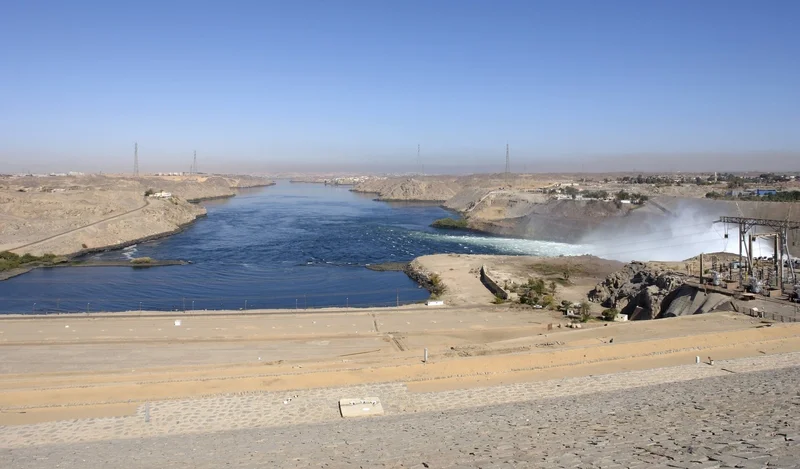
15. Aswan Dam.
The Aswan Dam is designed to simultaneously regulate water supply during periods of drought and prevent flooding. This is one of the largest reservoirs in the world. Both extremes previously led to severe crop losses, which in turn led to famine. This could have had disastrous consequences due to the growing population. Thus, already in 1902, the first dam of this type, the largest at that time, was put into operation. When it became apparent that even this location might have too little water, the idea of building a large Aswan Dam was developed from 1947 onwards. In addition, this made it possible to finally provide electricity to large sections of the population. However, some Nubian residential areas were damaged as a result of this construction project. Many monuments, such as Abu Simbel, had to be demolished to save them, while others sank into the new reservoir.